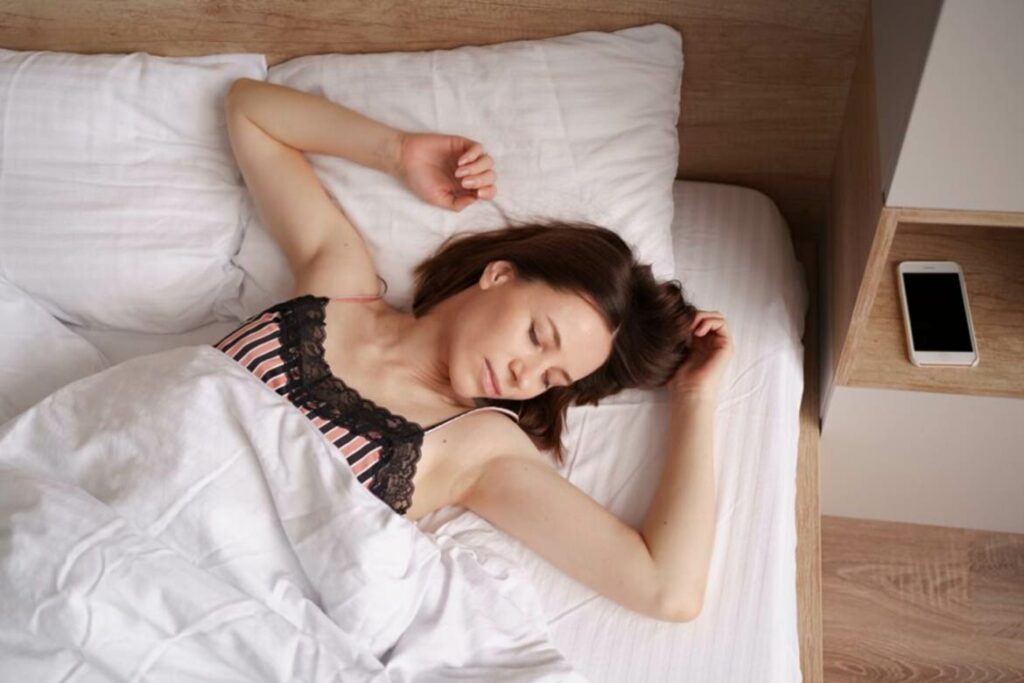One of the most simple and best things we can do for our well-being is to get a good night’s sleep. People frequently disregard this and continue to use mattresses that don’t provide enough support and comfort, despite the fact that the quality of our beds has a substantial impact on how well we sleep. Many people suffer back pain and body pain due to bad sleeping posture, which can be attributed to the wrong type of mattress. In many cases, the back problem can be solved only by changing the mattress.
Even while getting a new mattress comes down heavily on your pocket, it can help you sleep better. Just like with any major purchase, you want to be sure that you make a wise choice. With the help of this guide, you’ll be equipped to select a mattress that will meet your preferences and provide you with restful sleep every night.
How to choose a mattress for back pain?

Read more: 11 common showering mistakes that impact your health badly
Back pain can have many different potential reasons, but one that shouldn’t be overlooked is an unsupportive mattress. Proper support can help people who don’t currently have back discomfort avoid pain, and the right mattress can provide cushioning and comfort for those who do.
The type of pain must be taken into account along with other mattress requirements and preferences when selecting the best mattress for back pain. Some back discomfort is sudden and only lasts a short while. Acute back pain is what this is. In some cases, the discomfort lasts for a long time and is referred to as chronic back pain. Back issues might start out acute, like those brought on by an injury, and progress to become chronic. Finding the right pressure relief and comfort levels will help you sleep with your spine in the best possible position.
Mattress for lower back pain:
The lumbar region’s bottom five vertebrae (L1-L5) are impacted by lower back discomfort. It is the most prevalent form of back pain and one of the main causes of doctor visits. The muscles and the spine itself might be harmed by bending and twisting this part of the back.
Lower back pain might result from sleeping incorrectly for an extended period of time. If the shoulders and hips aren’t supported when side sleeping, the entire spine may become out of alignment. It may happen to back and stomach sleepers because of a mattress that is either soft or too hard, which puts strain on the lumbar spine’s natural curvature.
In general, side sleepers should seek out mattresses that can cushion their impact points in the medium-soft to the medium-firm range. People who sleep on their backs or stomachs should opt for medium-firm to firm beds with minimal conforming.
Upper and middle back pain:
Upper and middle back pain is far more uncommon. Since the architecture in these areas is more stable, twisting movements are less likely to cause sprains and strains. These types of pain can be indicative of more serious issues, thus a doctor should be consulted.
An excessive amount of strain in the middle or upper back may occasionally result from improper posture. The likelihood of this type of pain can be decreased by using a pressure-relieving mattress that supports spinal alignment. The neck and upper spine can have the proper support if you have a good cushion with the perfect amount of loft.
Mattress according to sleeping position-
How do you usually position yourself when you go to bed? What is your position when you wake up?
The answers to these questions might provide significant details that can help with mattress selection. Different parts of your body need additional support depending on how you sleep to maintain proper spinal alignment. As a result, choosing a mattress that accommodates your sleeping position can increase comfort and reduce your risk of experiencing aches and pains.
For back sleepers:

Back sleepers put the most strain on their lower backs. An uncomfortable U-shape can be created by a mattress that is too soft because the torso may sink in more than the upper back and lower body. If a mattress is too hard, it won’t allow for the slight bend in the lower back. As a result, a mattress that is medium firm to firm with minimal to moderate contouring is suitable for back sleepers.
For side-sleepers
The shoulders and hips, which are where the body is the widest, are particularly sensitive pressure spots for side sleepers. Those points will drop out of alignment with the rest of the spine on a mattress that is overly soft. They will feel the impact at those areas and be more prone to misalignment on a mattress that is overly firm. Therefore, mattresses that range from being Medium Soft to Medium Firm are optimal for side sleepers.
For Belly sleepers
The most pressure is placed on the lumbar spine by stomach sleepers, who are similar to back sleepers. They often respond best to a firm mattress that prevents them from curving into a U shape and won’t feel confining when they are face-down on the mattress.
For no position/combination sleepers
Combination sleepers change positions throughout the course of the night. Usually, people should base their mattress choice on the position they spend the majority of their time in. In all sleeping positions, Medium Firm is your best option if there isn’t a primary position. These people should also opt for a responsive mattress that allows for simple bed mobility.
Mattress according to body type-

Read more: When you must consult a dietitian? 6 things to keep in mind before choosing your dietitian
Body type and weight affect the ideal mattress selection, which affects other crucial factors like comfort and other qualities like spinal support.
People under 60 kg don’t sink as far into a mattress since they have a low weight. They frequently benefit from a softer mattress to achieve adequate contouring, particularly if they sleep on their side and/or have noticeable pressure points. Innerspring mattresses typically don’t fit well, therefore foam or hybrid beds are excellent alternatives.
Recommendations for mattress firmness based on sleeping position in the previous section is generally suitable for those weighing 60kg to 100kg. Mattresses made of latex, foam, or hybrid materials can all be chosen based on their unique characteristics and styles.
Over 100kg individuals will sink deeper into a mattress, especially close to larger body parts, which runs the danger of disrupting spinal alignment. To assist reduce that risk, mattresses that are a little firmer for these sleepers typically produce better results. People who weigh more than 100kg may benefit from a responsive mattress since it makes moving around on top of it easier and less likely for them to feel stuck in bed. The most responsive alternatives are typically latex and hybrid.
Any sleeper needs durability, but those who weigh more over 100kg can put additional strain on a mattress’ upper layers. Because of this, people who are heavier than average choose mattresses with thicker comfort systems made of high-density materials.
Weight is not the only factor that influences how to pick the best mattress. Particularly if they sleep on their side, people with wider shoulders or hips may want a softer mattress with greater contouring. The mattress size should be carefully considered by anyone over six feet tall to ensure that they can spread out comfortably.
